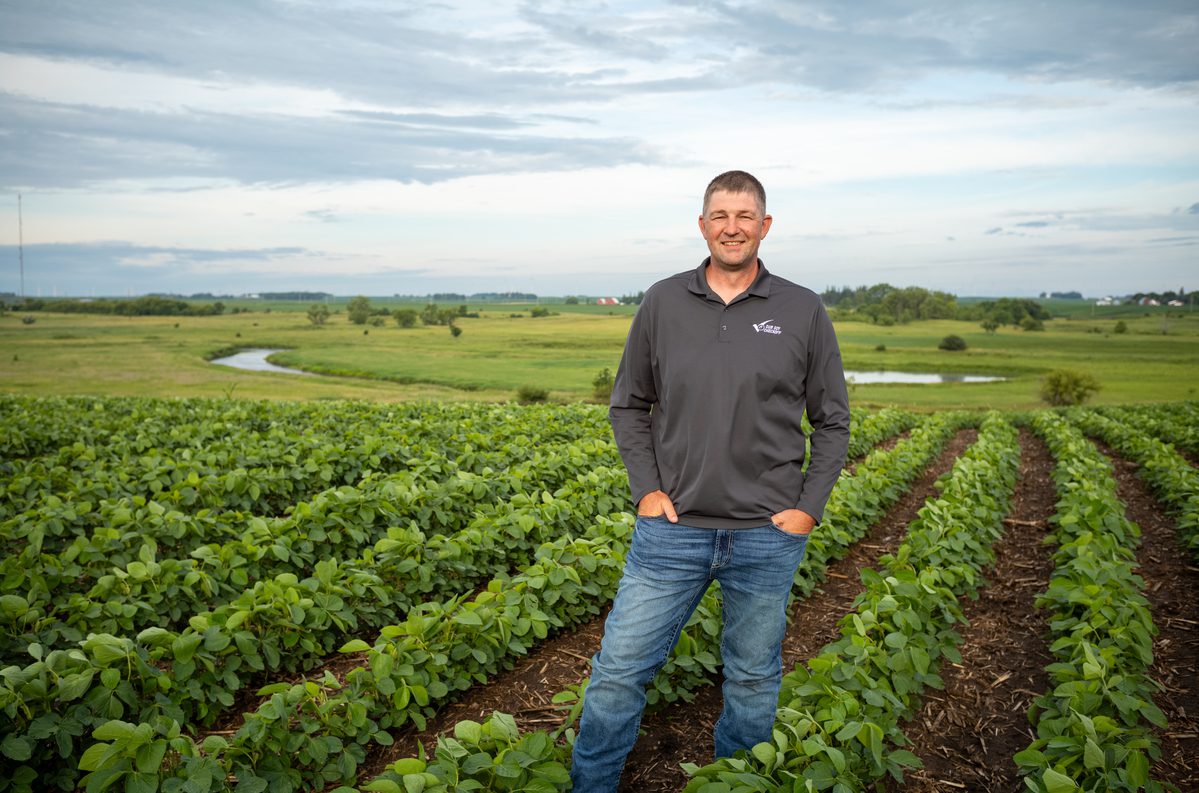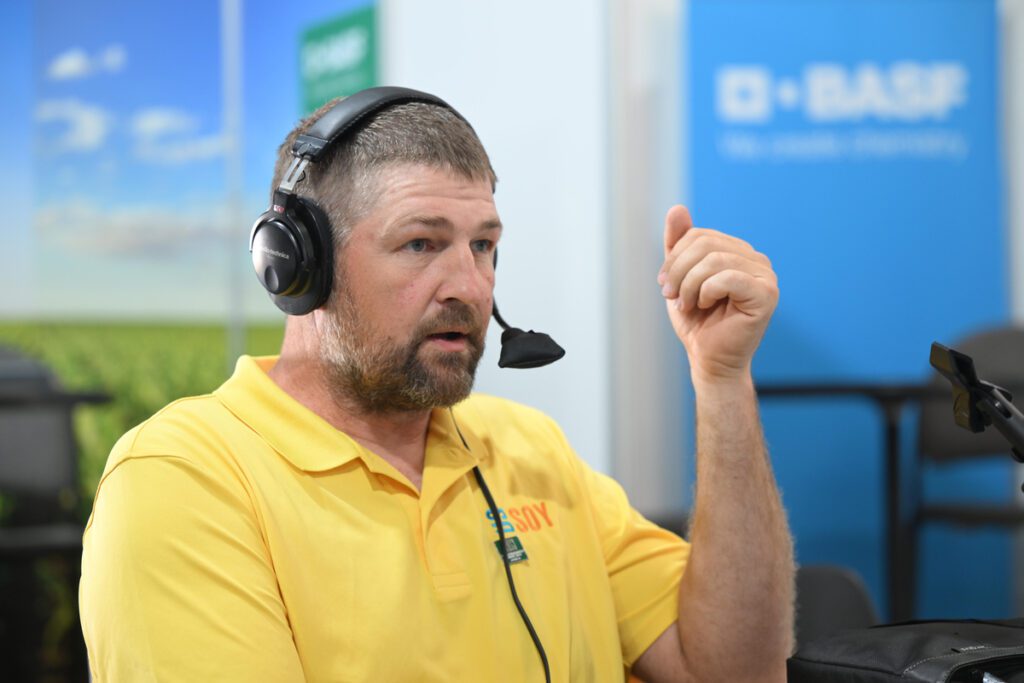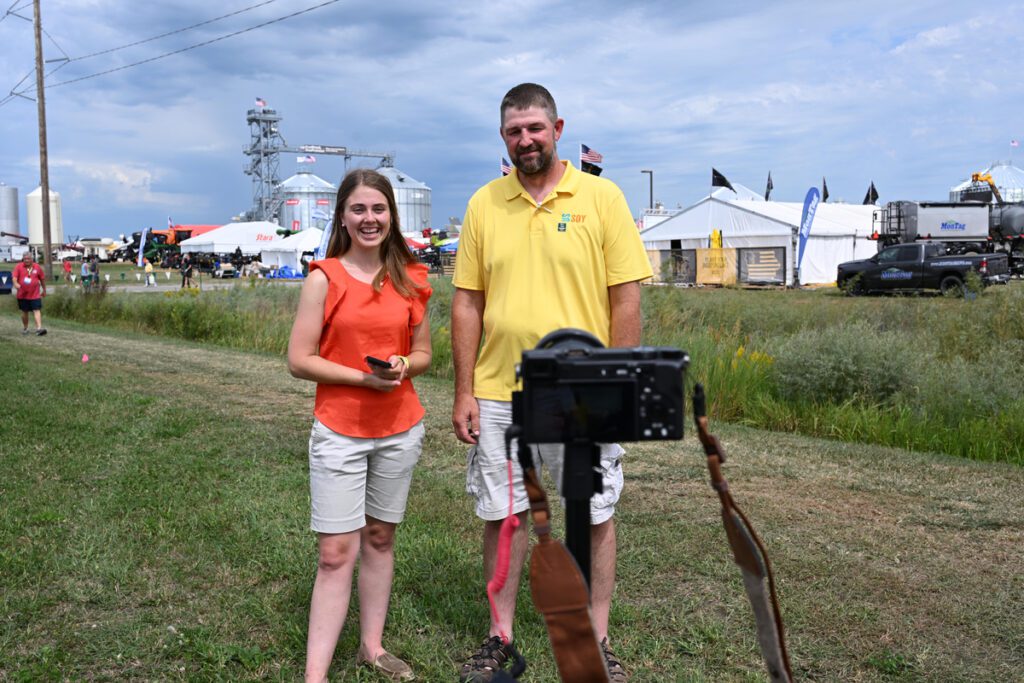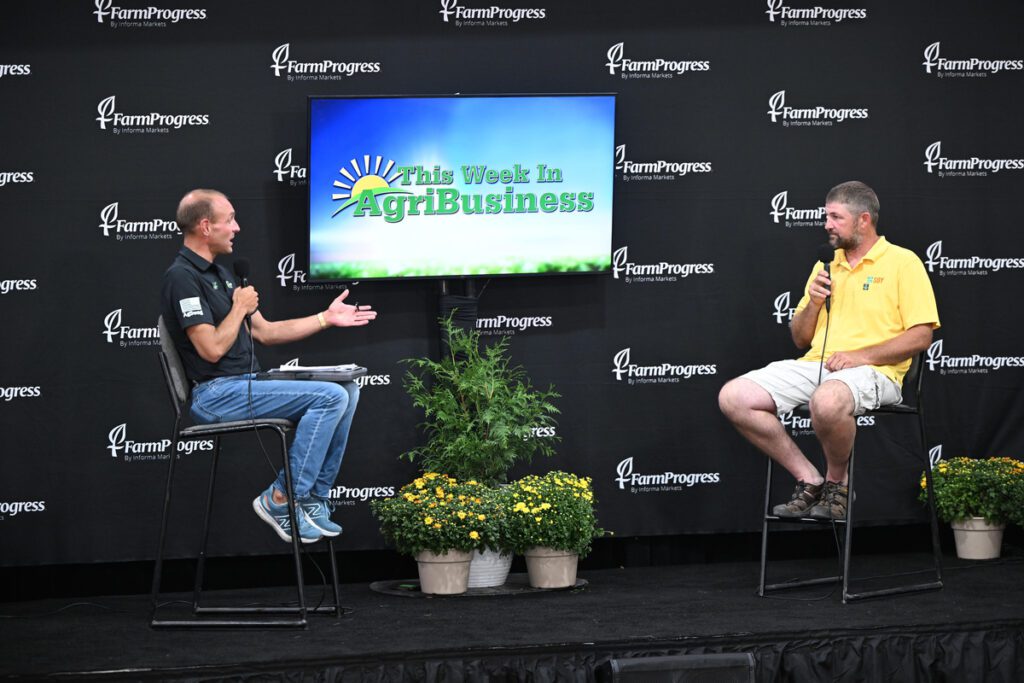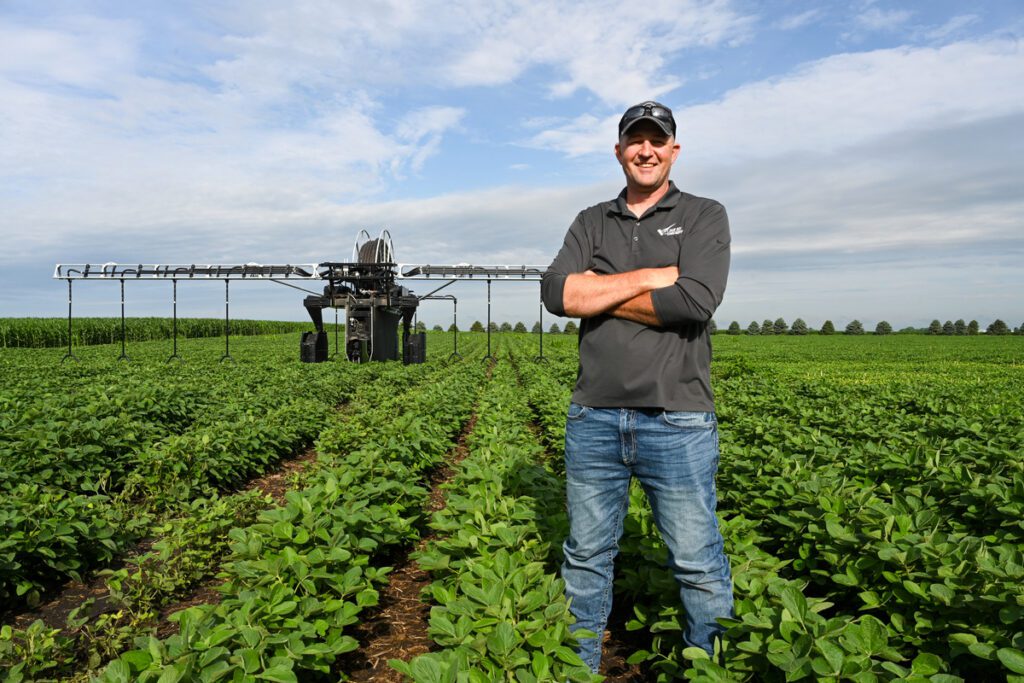The Ground Work series shares the perspectives of U.S. soybean farmers as they observe how the U.S. Soy industry lays the groundwork to grow innovative, reliable and sustainable solutions for people and communities around the world.
Every industry has an event that is THE place to be. For tech, it’s CES, the Consumer Electronics Show, in Las Vegas, Nevada. For music, film and television, it’s South by Southwest, or SXSW, in Austin, Texas.
And for Midwestern agriculture in late summer, it’s the Farm Progress Show. This outdoor tradeshow showcases all the latest innovations for farmers like me and my neighbors. I grow soybeans, corn and alfalfa, and I am exploring cover crops. I have neighbors who raise animals, and I use the nutrients in the manure from a nearby barn to fertilize my crops.
The site of the Farm Progress Show alternates between Iowa and Illinois, two top-producing ag states in the heart of the Midwest. The event takes place during the last week of August each year. The 2024 Farm Progress Show was held outside Boone, a small town in central Iowa, about 80 miles south of my north-central Iowa farm.
When this event is in Iowa, I try to go and checkout the innovations that may become part of how I farm in five to 10 years. I also pay attention to solutions for the challenges I face right now.
This year, many exhibitors featured drones and the ways they can help farmers. Another common theme was farm equipment automation, or the agricultural equivalent of driverless cars. One company even featured their irrigation machine that travels through fields along rows, rather than in a circle like the center pivot irrigation systems common in the Midwest. Other exhibitors featured solutions to current challenges, like managing cover crops, controlling weeds and protecting crops from diseases.
My time to check all that out was limited this year.
Like major tradeshows in other industries, the Farm Progress Show generates the latest in industry news. As a director for the United Soybean Board, I spent much of my day participating in media interviews about U.S. Soy.
I covered a wide variety of topics with many different types of media. As I look back on those conversations, I realize I got to talk about how U.S. Soy offers innovative solutions for almost anything.
In a couple traditional ag radio interviews with farm broadcasters, I shared crop updates and the way that the soy checkoff is supporting development of new uses for soybean meal. For example, SoyFoam is a firefighting foam made from U.S. Soy flour. It helps professionals suppress fires without added PFAs chemicals, which have been linked to adverse health effects.
I talked with a magazine writer from outside the agriculture industry. He was very interested in how soybean oil can be used as a penetrant. U.S. Soybean oil offers renewable options that replace petroleum-based ingredients in lubricants, cleaners, tires and countless other products.
I visited with a social media influencer who videoed our conversation on her phone. This conversation focused on investing in education, and I talked about how U.S. Soy supports Nourish the Future, a national education effort developed by science teachers for science teachers. Nourish the Future develops curriculum that incorporates the science of agriculture into the principles they need to teach their students. It provides training workshops for middle school and high school so they can experience the curriculum for themselves and tour farms to see science in action.
In an interview for This Week in Agribusiness, an industry television show, I discussed Farmers for Soil Health, an effort to advance the use of soil health practices like cover crops to help improve farmer profitability. The program, jointly supported by the soy checkoff, the pork checkoff and the National Corn Growers Association, provides technical and financial support for farmers implementing cover crops. As farmers improve soil health with cover crops, businesses can take advantage of inputs with a lower carbon footprint, and consumers get more sustainable products. It’s a win-win-win.
From fighting fires to improving education and soil health, U.S. Soy provides real solutions. I enjoyed sharing the value U.S. Soy can provide anywhere during those interviews.
Like any major industry event, the Farm Progress Show is also the place to be to connect with farmers and others in the industry. Between interviews and visiting exhibitors, I made time to connect with farmer friends from Illinois who attended the show. I also connected with agronomists and others at the companies who supply the seed, fertilizer and crop protection chemicals I use to raise my crops.
I was among the tens of thousands of farmers and members of the agriculture industry who took advantage of the Farm Progress Show as the place to be — finding and sharing innovative solutions, like those from U.S. Soy.
